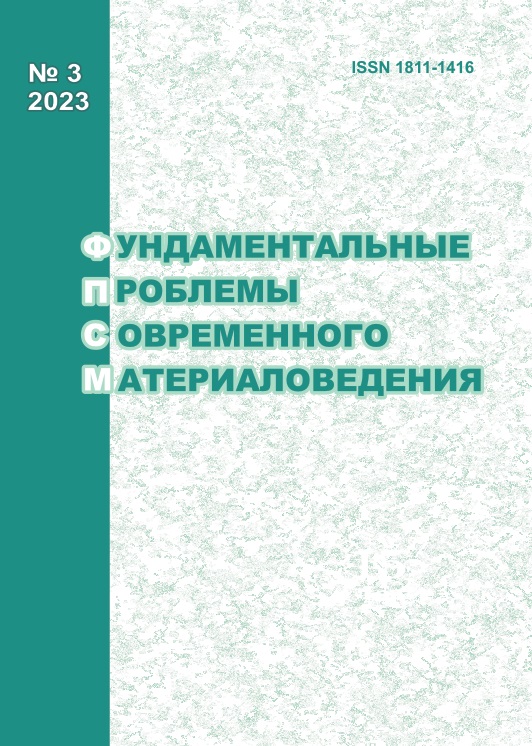FORMATION OF MICRO- AND NANO- IN ELECTROEXPLOSIVE CARBOBORIZATION OF TITANIUM ALLOYS BY THE MECHANISM HYDRODYNAMIC INSTABILITIES
10.25712/ASTU.1811-1416.2023.03.004
Keywords:
dispersion equation, Kelvin-Helmholtz instability, short wave approximation, titanium, carboboratingAbstract
A study of the formation of micro- and nanocrystalline surface layers of alloys under the action of heterogeneous plasma flows according to the mechanism of occurrence and development of Kelvin-Helmholtz instability on the example of Ti–B and Ti–C–B systems was carried out. Special attention was paid to the initial stage of its development, when the disturbances of the interface were considered sinusoidal. The course of the first and second environments were considered visco-potential. The dependence of the growth rate of perturbations on the wave number was obtained from the dispersion equation of perturbations of the interface of media. Its analysis showed that in the parameter plane (ε, m) there are eight regions in which it can be approximated by approximate dependencies: αI ‒ IV, αI/ ‒ IV/. From these dependencies, the relationships of the wave number, which accounts for the maximum of the growth rate of disturbances and the characteristics of the material, the parameters of external influence, are obtained. It is shown that, depending on the transverse velocity of the second layer, the ratio of viscosities and densities of layers, the relative errors of these approximations are 1-12 %. The maxima of the growth rate of disturbances at the interface of the media are divided into two types: hydrodynamic and viscosity-conditioned. The hydrodynamic maximum, which arises due to the mutual sliding of the layers, exists in all regions on the parameter plane (ε, m). The viscosity-conditioned maximum occurs in regions II and III under the condition m > 0.4767, as well as in II/ and III/ at m < 0.4767. In region I on condition , the hydrodynamic and viscosity-conditioned maximum exist simultaneously. The results obtained were applied to the processes of electro-explosive boration and carboboration of titanium. It is established that an approximate analytical dependence with an error of 1 % is performed at the interface of titanium and boron, and the maximum has a hydrodynamic origin. The same approximation is also performed in the case of carbonation at the plasma/melt interface.











 Journal «Fundamental’nye problemy sovremennogo materialovedenia / Basic Problems of Material Science»
Journal «Fundamental’nye problemy sovremennogo materialovedenia / Basic Problems of Material Science» This work is licensed under a
This work is licensed under a 
